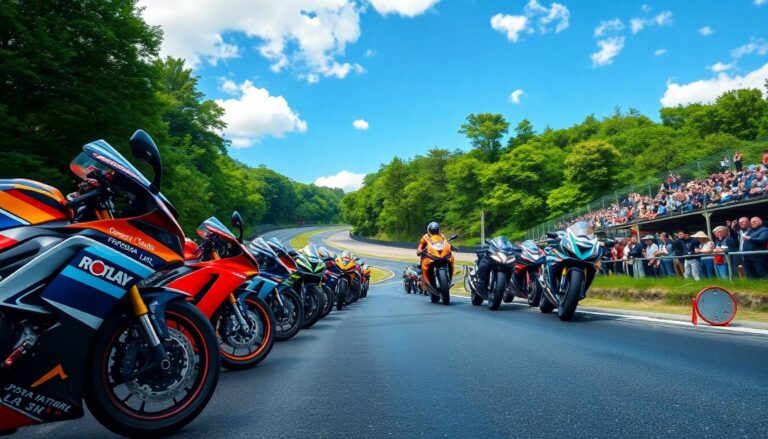Argomenti trattati
The All Japan Road Race Championship, known in Japanese as Zen Nihon Rōdo Rēsu Senshuken, represents the pinnacle of motorcycle racing in Japan. Organized by the Motorcycle Federation of Japan (MFJ), this championship has been integral to the nation’s motorsport culture since its inception.
Established in 1961, the MFJ hosted its inaugural race in 1967, marking the beginning of an exhilarating journey in motorcycle racing. Initially dominated by the 500cc class, the championship transitioned in 1994 to embrace the superbike class, which has since become its defining feature.
The evidence
Throughout its history, the All Japan Road Race Championship has experienced significant technological advancements and class changes. The 2002 season highlighted this evolution when several manufacturers utilized the championship as a testing ground for their MotoGP prototypes. Although these advanced bikes frequently clinched victories, they were not eligible for championship points, illustrating the competitive landscape.
Current classes and specifications
The series now features a compact schedule of seven rounds, attracting a rich pool of talented Japanese riders and a diverse array of motorcycles. The machines competing in the championship are primarily derived from 1000cc commercial sport models, meticulously modified to meet rigorous racing standards. From the 2025 season onward, the championship adopted the eco-friendly ETS Renewa Blaze NIHON R100 as its racing fuel, underscoring a commitment to sustainability.
Key manufacturers, including Honda, Kawasaki, Suzuki, Yamaha, Aprilia, BMW, and Ducati, participate in this championship. Their motorcycles adhere to specifications akin to those seen in the Endurance World Championship and the prestigious Suzuka 8 Hours endurance race.
Tyre suppliers and racing regulations
The choice of tyre suppliers also plays a crucial role in the championship. Teams often rely on top brands like Dunlop and Bridgestone, ensuring optimal performance on the track. In the premier class, known as JSB1000, motorcycles closely align with their commercial counterparts, limiting modifications to maintain a degree of stock integrity.
Supporting classes and their impact
In addition to the JSB1000 class, the championship features other categories such as the ST1000 class, which showcases 600cc commercial road sport models. Here, modifications are similarly restricted, with Honda and Yamaha leading the charge in this competitive arena.
Moreover, the championship includes prototype-based machines such as the Honda NSF250R and KTM RC250R, which are tailored to meet the specifications of the Moto3™ class in the MotoGP™ World Championship. This diversity in classes reflects the championship’s commitment to nurturing talent across various levels of motorcycle racing.
Community and participation
The All Japan Road Race Championship is not just about speed; it embodies a vibrant community of riders, teams, and fans. The atmosphere at the races is electric, filled with passion and camaraderie that unites participants and spectators alike. The championship serves as a platform for local talent to showcase their skills, often leading to opportunities on a global stage.
As the championship continues to evolve, it remains a vital part of Japan’s cultural landscape, capturing the hearts of motorcycle enthusiasts and aspiring racers. With ongoing advancements in technology, sustainable practices, and a focus on community engagement, the All Japan Road Race Championship is poised for a thrilling future.

